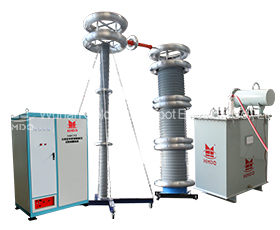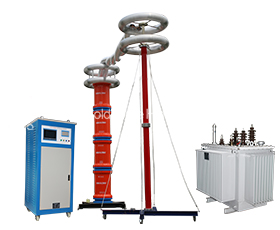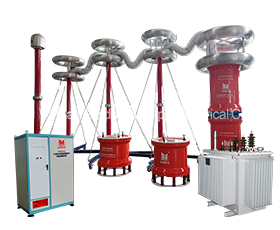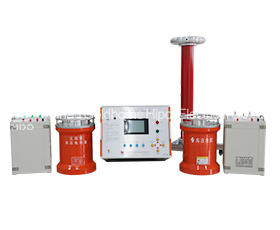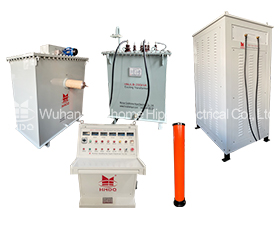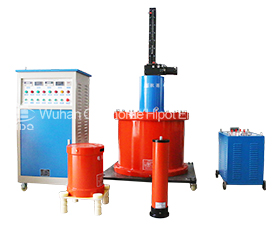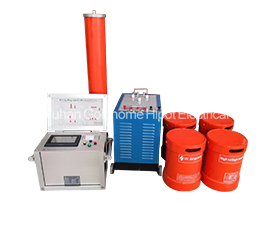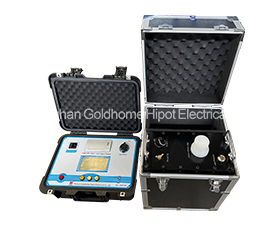high voltage AC resonant test system
Apr. 24, 2024
A high voltage AC resonant test system is a type of electrical test equipment used to generate high-voltage alternating current(AC)signals for various applications,such as testing the dielectric strength of electrical insulation,evaluating the performance of high-voltage equipment,and conducting research on high-voltage phenomena.
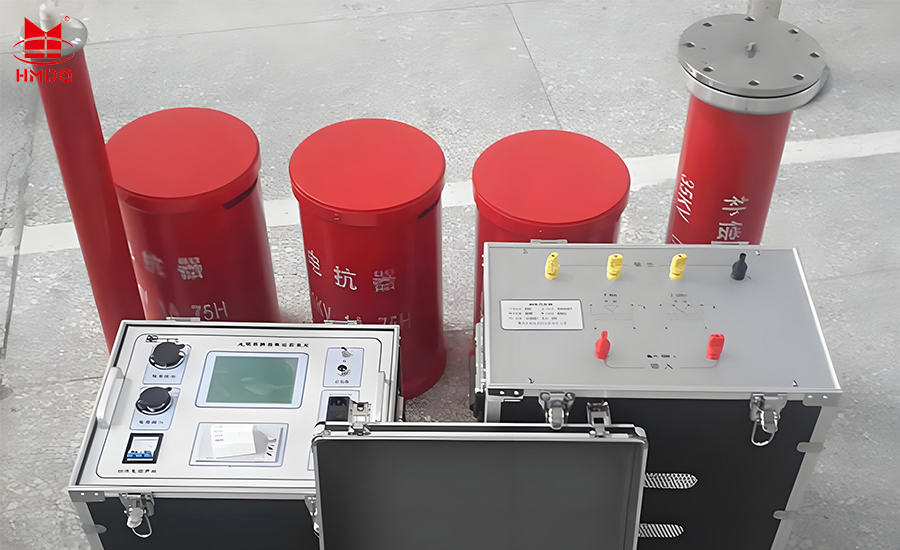 The key components of a high voltage AC resonant test system typically include:
The key components of a high voltage AC resonant test system typically include:
1.Power source:This provides the initial low-voltage AC input to the system.
2.Resonant transformer:This is a specialized transformer that steps up the input voltage to the desired high-voltage level.The transformer is designed to operate at a specific resonant frequency,which is determined by the capacitance and inductance of the system.
3.Capacitor bank:This is a set of capacitors connected in parallel to form a high-voltage capacitive load.The capacitance value is carefully selected to achieve resonance with the transformer's inductance.
4.Control and monitoring system:This includes various control and measurement devices,such as voltage and current sensors,to monitor and regulate the output of the test system.
The operation of a high voltage AC resonant test system is based on the principle of resonance.The resonant transformer and the capacitor bank form a resonant circuit,which is tuned to a specific frequency.When the input power source is applied at this resonant frequency,the voltage across the capacitor bank can be significantly higher than the input voltage,allowing the generation of high-voltage AC signals.
These test systems are commonly used in the development,testing,and quality control of high-voltage equipment,such as power transformers,circuit breakers,and insulation materials.They provide a controlled and safe environment for conducting high-voltage tests and evaluations,which are essential for ensuring the reliability and safety of electrical power systems.

1.Power source:This provides the initial low-voltage AC input to the system.
2.Resonant transformer:This is a specialized transformer that steps up the input voltage to the desired high-voltage level.The transformer is designed to operate at a specific resonant frequency,which is determined by the capacitance and inductance of the system.
3.Capacitor bank:This is a set of capacitors connected in parallel to form a high-voltage capacitive load.The capacitance value is carefully selected to achieve resonance with the transformer's inductance.
4.Control and monitoring system:This includes various control and measurement devices,such as voltage and current sensors,to monitor and regulate the output of the test system.
The operation of a high voltage AC resonant test system is based on the principle of resonance.The resonant transformer and the capacitor bank form a resonant circuit,which is tuned to a specific frequency.When the input power source is applied at this resonant frequency,the voltage across the capacitor bank can be significantly higher than the input voltage,allowing the generation of high-voltage AC signals.
These test systems are commonly used in the development,testing,and quality control of high-voltage equipment,such as power transformers,circuit breakers,and insulation materials.They provide a controlled and safe environment for conducting high-voltage tests and evaluations,which are essential for ensuring the reliability and safety of electrical power systems.
- Previous
What are the applications of the complete set of AC Resonant Test System in GIS systems
- Next
Hot Products
- AC Resonant Test System With Partial Discharge View More
- AC Resonant Test System View More
- Discharge Free Induced Voltage Test System View More
- AC Resonant Test Set With Partial Discharge View More
- Power Frequency Inductive Resonant Test View More
- Power Frequency Inductive Resonant Test System View More
- AC Resonant Test Set View More
- VLF Hipot Tester View More

